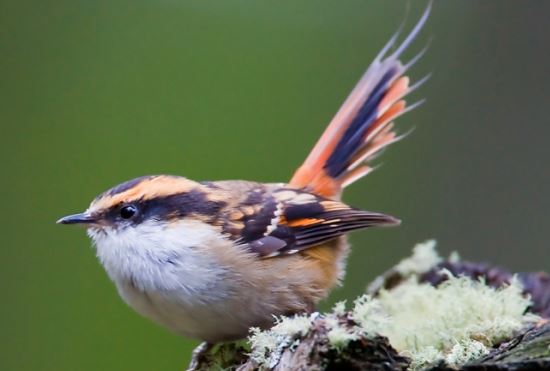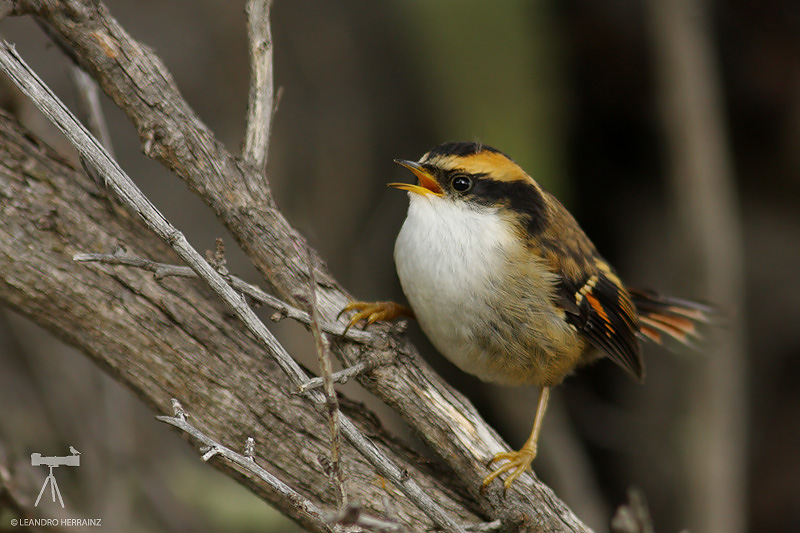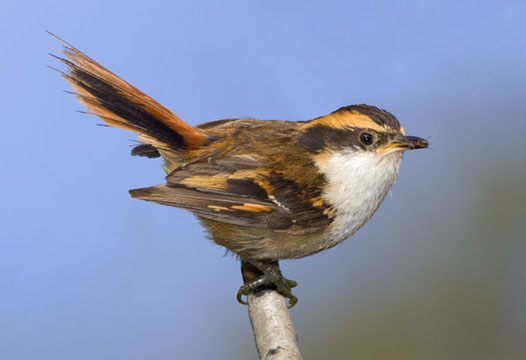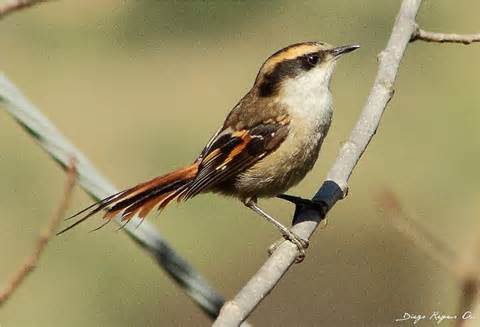
Aphrastura spinicauda
SUBFAMILY
Synallaxeinae
TAXONOMY
Aphrastura spinicauda J.F. Gmelin, 1789.
OTHER COMMON NAMES
French: Synallaxe rayadito; German: Stachelschwanzschlьpfer;
Spanish: Rayadito Comъn.
PHYSICAL CHARACTERISTICS
Body length is about 5.5 in (14–14.5 cm). Bill is short, straight,
and sharply pointed. The body is small and the tail is long and
tipped with sharp spines emanating from the tips of the feathers.
The sexes are similar. The back is colored with lengthwise
stripes of alternating dark-brown and tan, the tail is bright rufous,
the throat and belly are white, the wings have two buffcolored
bands, and there is a tan stripe over the eye.
DISTRIBUTION
Occurs in southern and central Chile and adjacent western Argentina.
Occurs on many coastal islands, and rarely on the
Falkland Islands.
HABITAT
Inhabits a variety of forests and wooded habitats, including primary
temperate forest dominated by southern beech (Nothofagus
species), mature and younger secondary woodland, and low-
shrub and tussock-grass scrub. Mostly occurs as high as about
3,950 ft (1,200 m), and sometimes up to 6,550 ft (2,000 m).
BEHAVIOR
A non-migratory species. Occurs as pairs during the breeding
season, and in small groups of up to 15 individuals during the
winter. May also occur in mixed-species foraging flocks during
the non-breeding season. An active and bold species, often
holding the tail cocked erect. The song is an extended,
buzzy trill.
FEEDING ECOLOGY AND DIET
Forages energetically for insects and other small invertebrates
within foliage at all levels of the forest canopy.
REPRODUCTIVE BIOLOGY
Constructs a nest of grasses and other fibers within a tree-hole
or in a space behind loose bark. Both the male and female incubate
the eggs and rear the nestlings.
CONSERVATION STATUS
Not threatened. An abundant species within its habitat.
SIGNIFICANCE TO HUMANS
None known.
Photo Gallery of - Thorn-tailed rayadito




 Animalia Life
Animalia Life